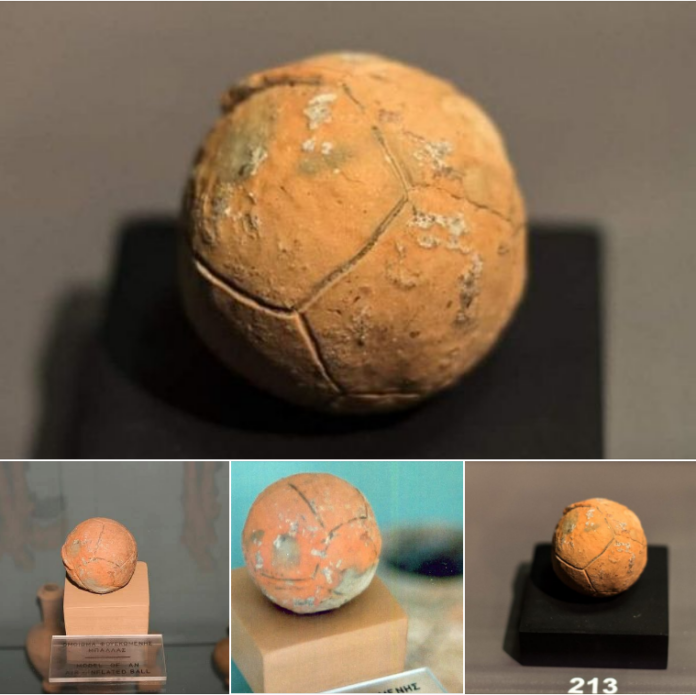In a remarkable twist of archaeological discovery, a terracotta miniature unearthed on the island of Samothrace has captured the imagination of scholars and soccer enthusiasts alike. This artifact, which may represent the world’s oldest known soccer ball, was found in Tomb S130 within the South Necropolis, part of the Sanctuary of the Great Gods. Dated to the Hellenistic period, around 275–250 BCE, this solid clay sphere bears an uncanny resemblance to modern leather soccer balls. This intriguing find offers a fascinating glimpse into the recreational activities of ancient Greece and hints at the possibility that the origins of soccer-like games might extend much further back in history than previously thought.
Discovery and Context

The artifact was discovered by an American archaeological team led by Elizabeth Dusenbury in collaboration with Greek archaeologist Andreas Vavritsas, who remained active until his passing in 2014. The tomb, known for its religious significance, yielded numerous fascinating objects, but none as captivating as this small, spherical terracotta ball. The design of the ball, while simple, closely resembles the leather soccer balls used today, leading to speculation about its function and significance in the ancient world.
Ancient Greek literature provides evidence that leather balls were in use, typically crafted by inflating the bladder of a large animal, such as a pig. These balls were often made from sewn-together pieces of leather or fabric, stuffed with materials like horsehair, straw, or wool. They were central to a variety of games enjoyed by both children and adults, highlighting the prevalence of ball games in ancient Greek society.
Significance and Interpretation

The discovery of this terracotta ball in a tomb is particularly significant. It suggests that ball games were not merely a form of entertainment but might have held cultural or symbolic importance. The presence of this object alongside the deceased could imply that ball games were integrated into funerary customs or religious rites, perhaps reflecting a belief in the continuation of such activities in the afterlife. Alternatively, it may symbolize a cherished pastime of the individual interred.
Ball games were indeed popular in ancient Greece. Games such as aporrhaxis and anakrousis involved striking a ball against the ground or a wall with considerable force, aiming to keep the ball in motion as long as possible. This concept shares some similarities with modern soccer, where the goal is to maintain control of the ball and keep it in play.
A Link Between Eras

The terracotta ball from Samothrace thus serves as a fascinating bridge between the ancient and modern worlds. Although it is unlikely that the ancient Greeks played a game identical to modern soccer, this artifact suggests that the fundamental enjoyment of ball games has persisted through the ages. The striking resemblance of this ancient clay sphere to contemporary soccer balls underscores the continuity of human culture and the enduring nature of play across different eras and civilizations.
Conclusion
As scholars delve deeper into the study of this artifact, it may yield further insights into the recreational life of the ancient Greeks and possibly prompt a reexamination of the origins of ball games. While it remains uncertain whether this small terracotta object from Samothrace represents the world’s oldest soccer ball, its discovery undoubtedly enriches our understanding of ancient Greek culture and its influence on the recreational practices that continue to shape our world today. This remarkable find serves as a testament to the timeless nature of play and the connections that link us to our distant ancestors.
